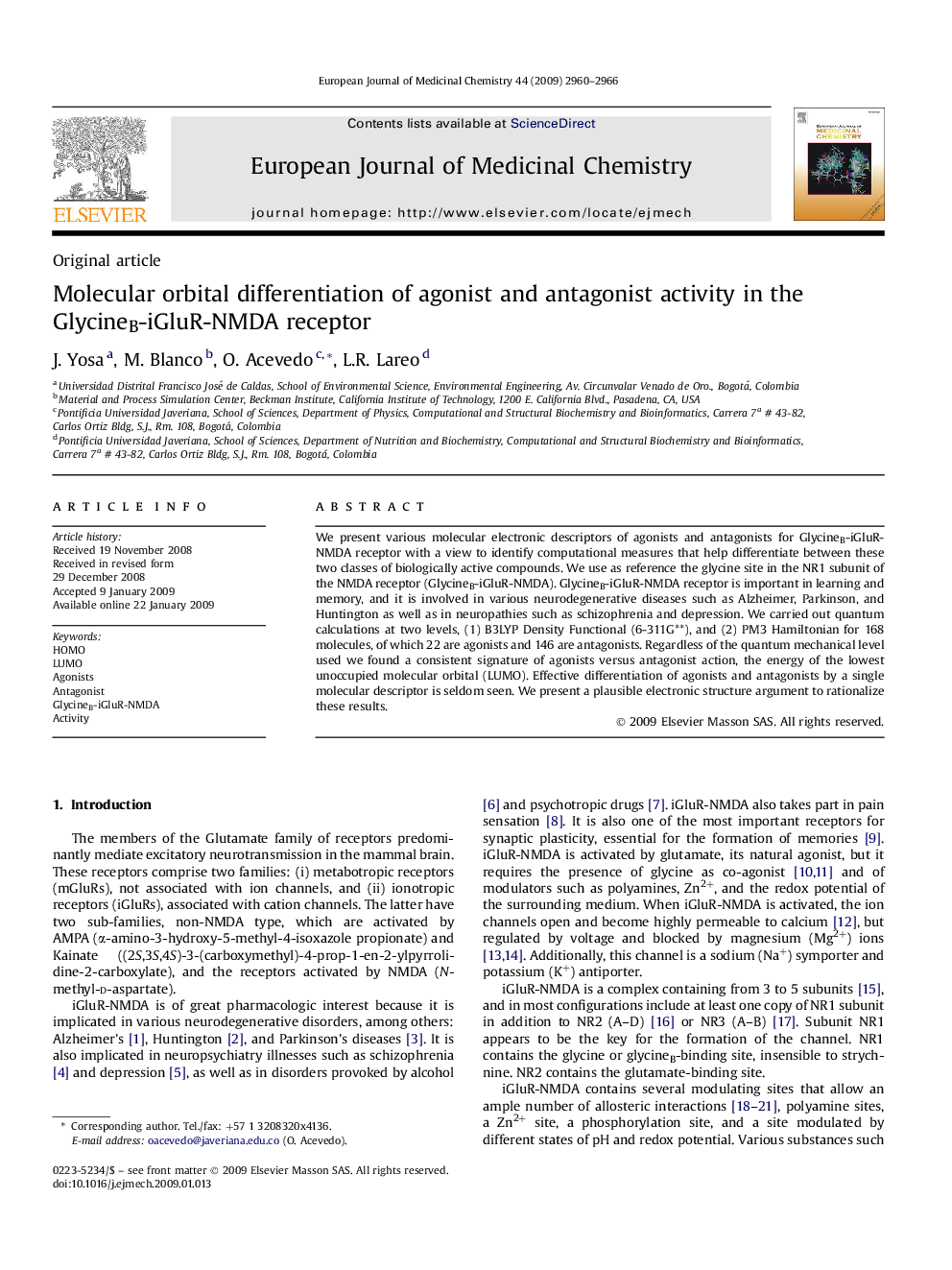| Article ID | Journal | Published Year | Pages | File Type |
|---|---|---|---|---|
| 1396836 | European Journal of Medicinal Chemistry | 2009 | 7 Pages |
We present various molecular electronic descriptors of agonists and antagonists for GlycineB-iGluR-NMDA receptor with a view to identify computational measures that help differentiate between these two classes of biologically active compounds. We use as reference the glycine site in the NR1 subunit of the NMDA receptor (GlycineB-iGluR-NMDA). GlycineB-iGluR-NMDA receptor is important in learning and memory, and it is involved in various neurodegenerative diseases such as Alzheimer, Parkinson, and Huntington as well as in neuropathies such as schizophrenia and depression. We carried out quantum calculations at two levels, (1) B3LYP Density Functional (6-311G**), and (2) PM3 Hamiltonian for 168 molecules, of which 22 are agonists and 146 are antagonists. Regardless of the quantum mechanical level used we found a consistent signature of agonists versus antagonist action, the energy of the lowest unoccupied molecular orbital (LUMO). Effective differentiation of agonists and antagonists by a single molecular descriptor is seldom seen. We present a plausible electronic structure argument to rationalize these results.
Graphical abstractFigure optionsDownload full-size imageDownload as PowerPoint slide
